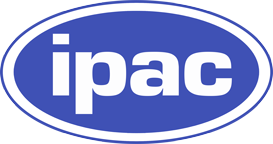Scope and Themes
The Astroviz workshop aims to bring together leading experts in the creation, dissemination, and learning with astronomy visualizations from around the world and provide a platform to connect with each other, share expertise and create better ways for collaboration and synergy among our distinct communities.
Develop/Implement Strategies for Asset Sharing
Finding ways to better share assets between institutions improves the visualization baseline for everyone. One outgrowth of the 2003 viz workshop was the beginnings of the AVM discussion to allow outreach imagery to share a common metadata standard to enable powerful methods of sharing and access. The AVM standard is being used to bring astronomical images to learners of all ages via resources like AstroPix, which makes finding verified astronomical images easier. Today the newly-expanded Data2Dome standard expands these efforts to a broad cross section of media types..
The workshop will be a forum for working through the existing standards, establishing a commitment to support them across institutions (which can leverage the participation of other astronomical centers). We can also look to the future and define needed improvements to the standards and tools with which to implement/access them.
Planetarium & Informal Education
Planetariums have provided the longest-running immersive experiences for audiences, and museums and science centers have long been the centerpiece for informal education for the public. How visualizations are developed and utilized in immersive experiences has been evolving rapidly in recent years. Understanding the tools of the trade, and what distinguishes shared informal educational experiences in the context of understanding and engagement are key elements to consider.
Immersive VR/AR & Emerging Technologies
There is a widespread interest in adopting new communication technologies like VR & AR for engaging the public in exploring and learning about our universe. Immersion need not be limited to the sense of vision; sonification and tactile representations of data are all part of emerging technologies that can reach many audiences. Evaluating these new technologies in the light of metrics from the planetarium/museum communities can help guide development to more powerful designs.
Share Tools/Techniques
One part of the professional development for the viz community is to see what tools/techniques are used by others to improve one’s own capabilities. This kind of practical hands-on exposure can help raise the bar for everyone. During this workshop participants will work together to produce a list of strategies/recommendations to facilitate sharing tools and techniques, particularly when engaging educators and learners outside of the classroom environment, which will be shared with the broader community.
Direct Connection with the Astronomical Community
For quality astronomical visualizations, it is recognized that there be a direct connection to the science and scientists doing the cutting-edge research. This provides for new results to be accurately incorporated into visualization work and ultimately provide audiences with an understanding of the frontiers of astronomy. The workshop will provide an opportunity to strategize on ways the practitioners in the field can work with the science community and share expertise/tools between the groups.
Open-Source Software Initiatives
A number of software projects have directly addressed astronomy visualization needs (ex: AAS WorldWide Telescope, FITS Liberator, etc). Do these tools help address core needs for current science learning and communications goals? How could they be improved? How can we promote these to the astro dev community? This workshop should address these and other questions.
Outcomes
In the interests of maintaining a strong visualization community moving forward, one outcome will be to draft a white paper on best practices and support for visualization efforts and collaborations moving forward, spanning the themes outlined above.

